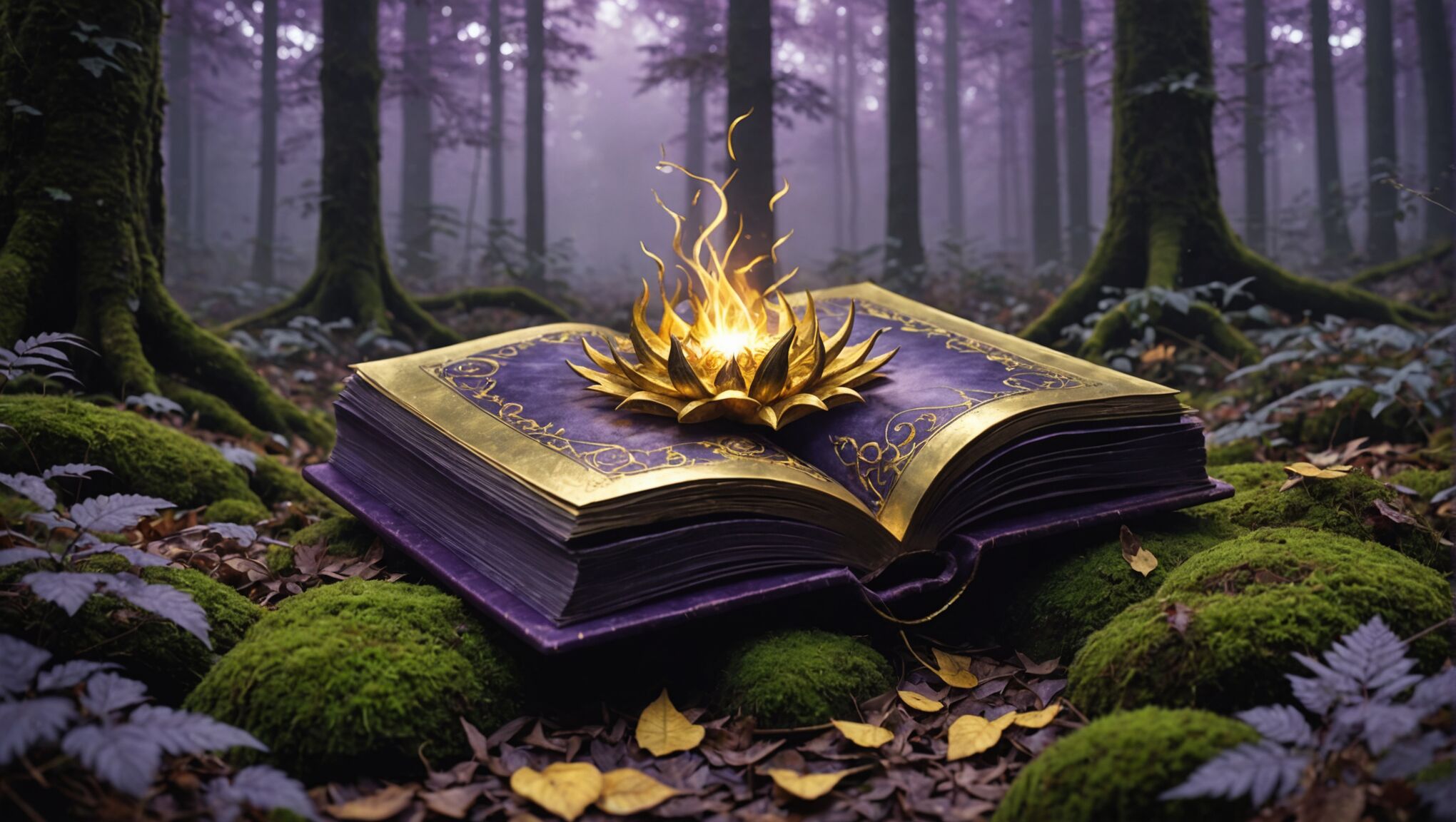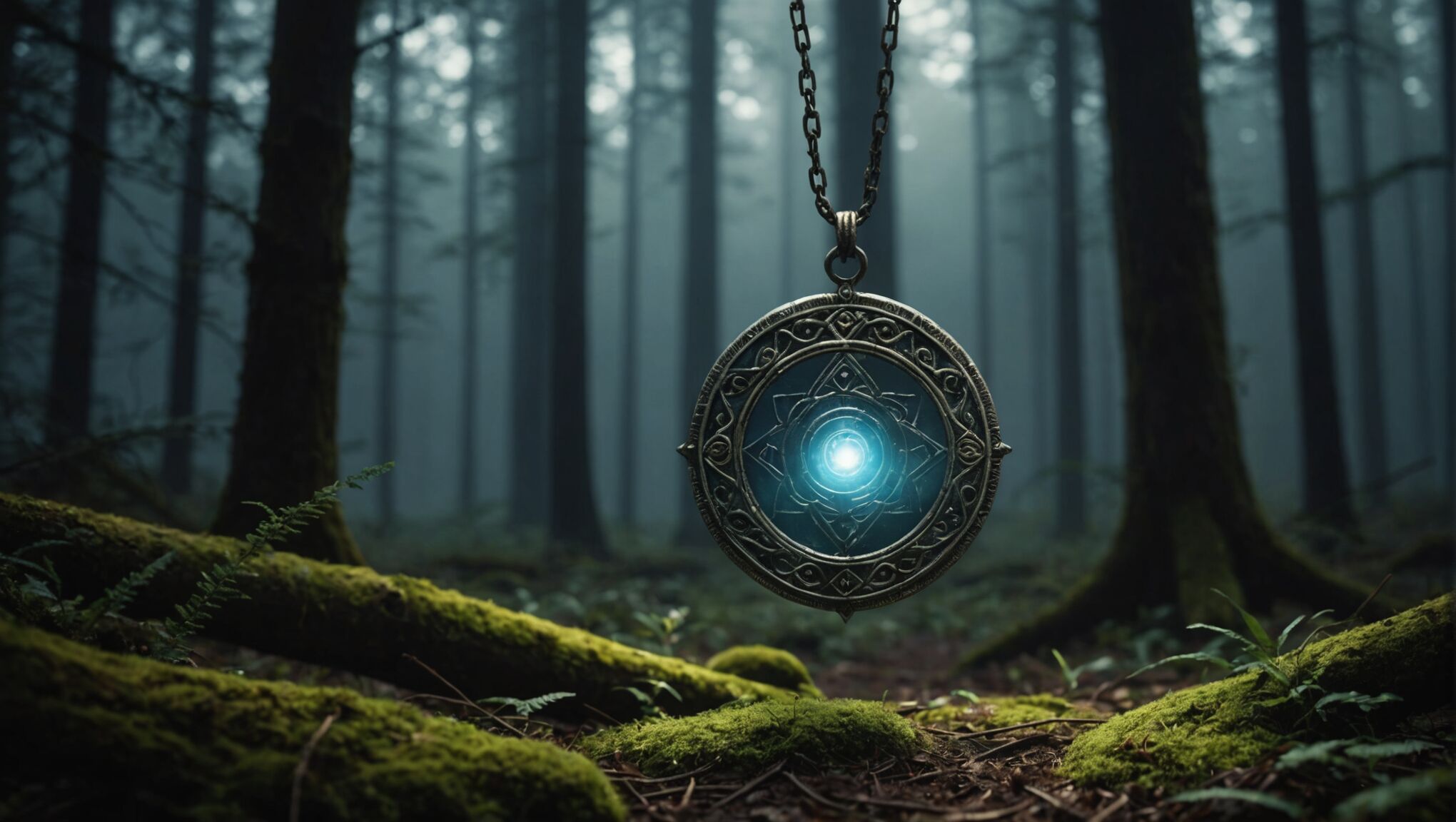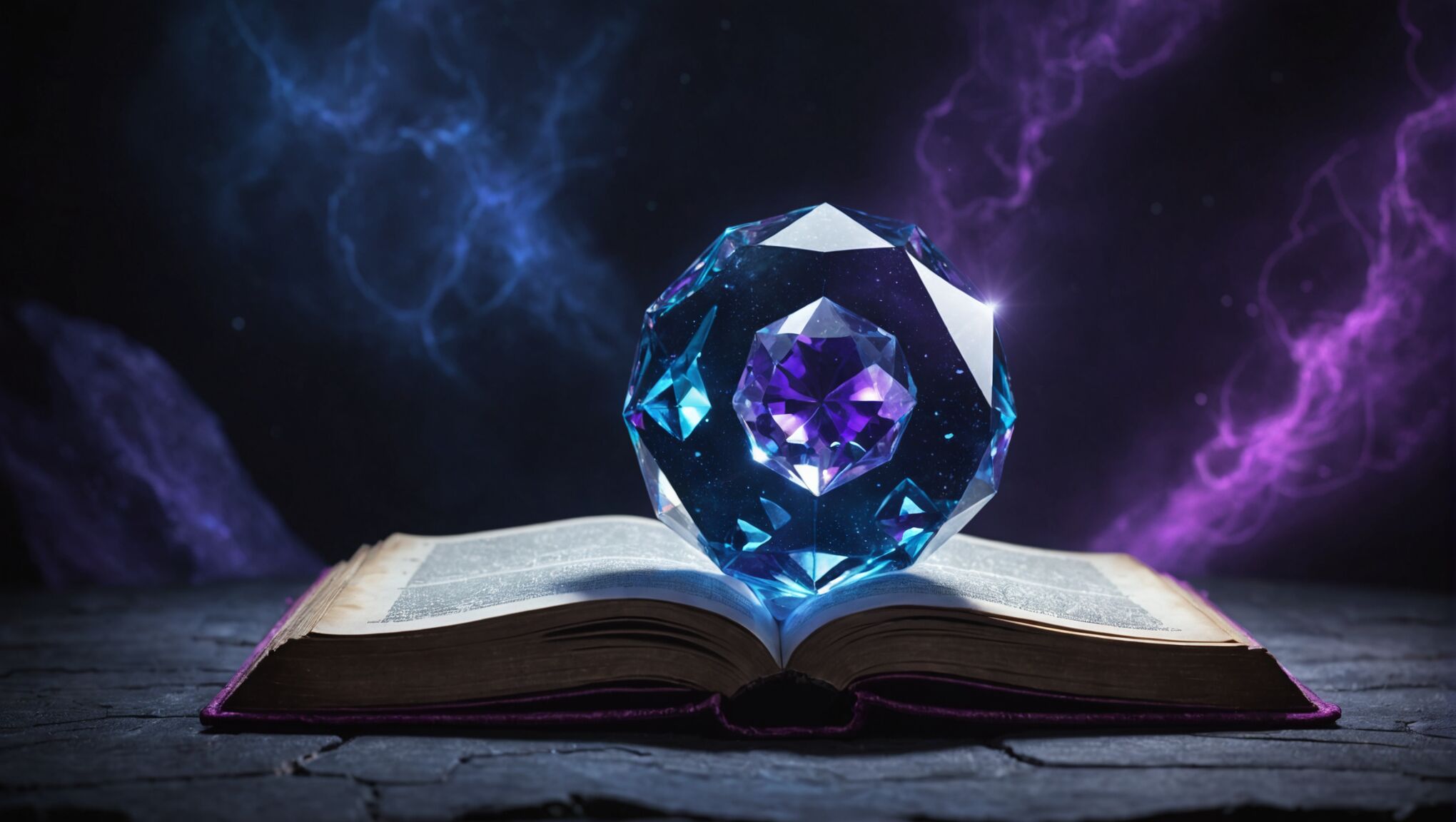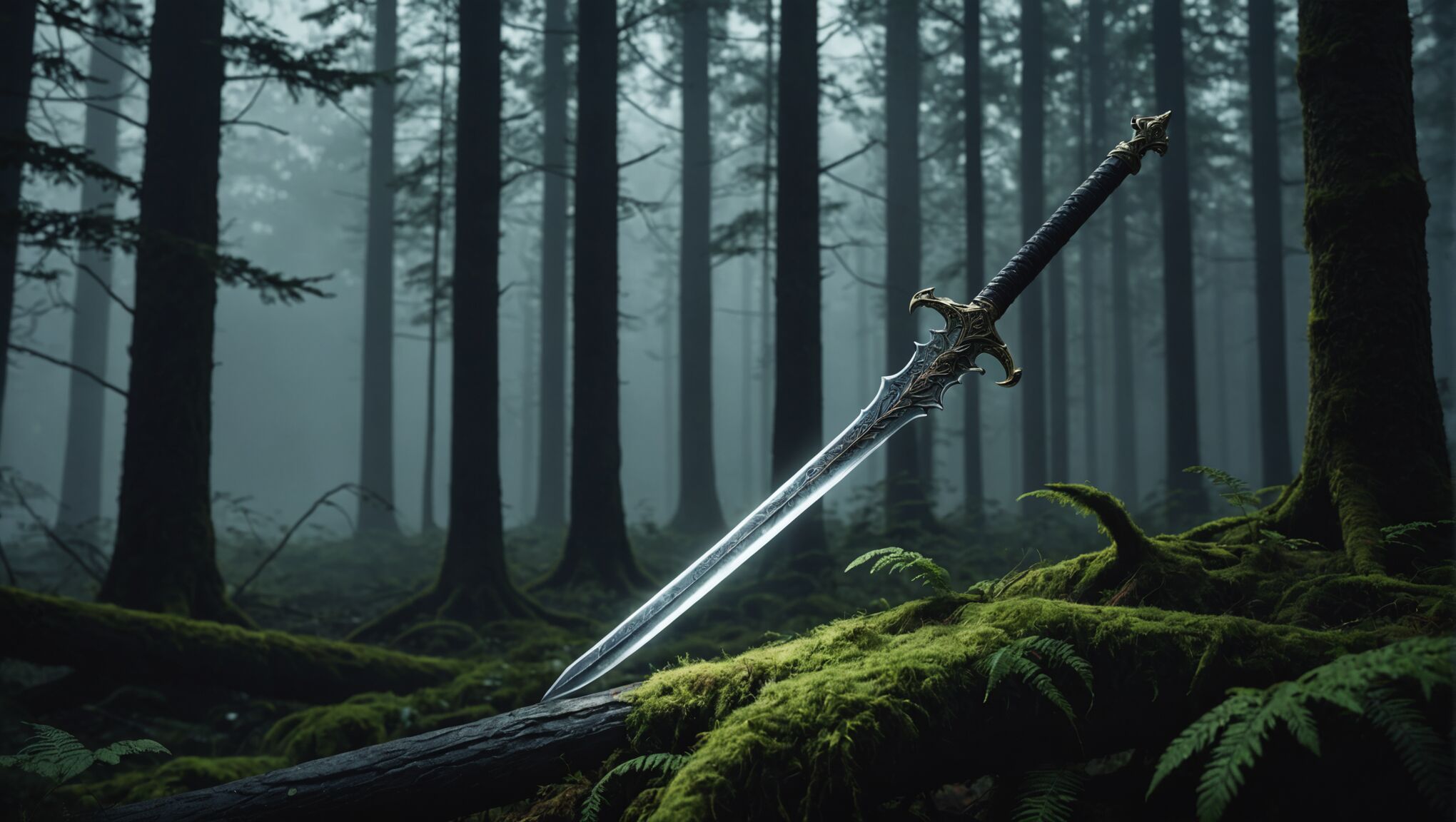blog
How to Use Contrast to Make Fantasy Book Covers Pop
Contrast is a fundamental principle in design that plays a crucial role in creating visually striking and memorable book covers. It involves juxtaposing different elements to create a sense of visual interest and hierarchy. In the context of fantasy book covers, contrast can be used to evoke emotions, convey the essence of the story, and captivate potential readers. Visual tension is often achieved through the strategic use of contrast, which helps guide the viewer’s eye and emphasizes key elements of the design.
There are various types of contrast that designers can employ, including color contrast, size contrast, and texture contrast. Color contrast involves using complementary or opposing colors to create a striking visual effect. Size contrast can be achieved by placing large elements alongside smaller ones, creating a sense of scale and importance. Texture contrast adds depth and dimension to a design by combining smooth and rough surfaces or intricate and simple patterns.
When applying contrast to fantasy book covers, it’s essential to consider the genre’s unique characteristics and audience expectations. Fantasy often involves otherworldly elements, magical creatures, and epic landscapes, which provide ample opportunities for creative contrast. Atmospheric contrast can be particularly effective in fantasy designs, using light and dark elements to create a sense of mystery or foreboding.
To effectively use contrast, designers should start by identifying the most important elements of the cover and determining how to make them stand out. This could involve creating a stark contrast between the background and foreground, using contrasting colors for the title and author name, or employing varying levels of detail to draw attention to specific areas of the design. It’s important to strike a balance, as too much contrast can result in a chaotic and overwhelming design, while too little contrast may lead to a dull and uninspiring cover.
Experimenting with different contrast techniques and combinations is key to finding the right approach for each unique fantasy book cover. By mastering the art of contrast, designers can create covers that not only capture the essence of the story but also stand out in a crowded marketplace, enticing readers to pick up the book and dive into the fantastical world within its pages.
Color theory for fantasy book covers
 Color theory plays a pivotal role in creating captivating fantasy book covers that resonate with readers. When selecting colors for a fantasy book cover, designers should consider the emotional impact and symbolic meaning of different hues. Cool colors like blues and purples often evoke mystery and magic, while warm colors like reds and oranges can suggest adventure and passion.
Color theory plays a pivotal role in creating captivating fantasy book covers that resonate with readers. When selecting colors for a fantasy book cover, designers should consider the emotional impact and symbolic meaning of different hues. Cool colors like blues and purples often evoke mystery and magic, while warm colors like reds and oranges can suggest adventure and passion.
“Color is a power which directly influences the soul.” – Wassily Kandinsky
One effective approach is to use a limited color palette to create a cohesive and memorable design. A monochromatic scheme, which uses various shades and tints of a single color, can create a sophisticated and unified look. Alternatively, complementary colors, which are opposite each other on the color wheel, can produce a vibrant and eye-catching effect.
The use of analogous colors, which are adjacent on the color wheel, can create a harmonious and pleasing aesthetic. This technique works well for fantasy covers that aim to convey a sense of tranquility or natural beauty. On the other hand, triadic color schemes, which use three evenly spaced colors on the color wheel, can create a bold and dynamic look that’s perfect for action-packed fantasy stories.
It’s crucial to consider the genre’s conventions when selecting colors. For dark fantasy or horror-tinged tales, a palette of deep purples, blacks, and blood reds might be appropriate. In contrast, high fantasy or whimsical stories might benefit from brighter, more saturated colors that evoke a sense of wonder and magic.
The strategic use of accent colors can dramatically enhance a cover’s impact. A small splash of a contrasting color against a predominantly muted background can draw the eye to important elements like the title or a key visual motif. This technique is particularly effective in creating focal points and guiding the viewer’s gaze.
Color gradients can add depth and dimension to a fantasy book cover. Subtle transitions between related colors can create a sense of atmosphere or suggest magical energy. Gradients can also be used to create the illusion of light sources, adding a layer of realism to fantastical scenes.
When working with typography, designers should ensure that the color of the text contrasts sufficiently with the background to maintain legibility. White or light-colored text on a dark background can create a dramatic effect, while dark text on a light background offers classic readability.
Lastly, it’s important to consider how colors will appear in different formats, from physical books to digital thumbnails. Colors that look stunning in print may not translate well to screens, so designers should test their color choices across various mediums to ensure consistency and impact.
Utilizing light and shadow

Light and shadow are powerful tools in the fantasy book cover designer’s arsenal, capable of creating depth, drama, and atmosphere. When skillfully employed, these elements can transform a flat image into a dynamic and immersive visual experience that captures the essence of the story within.
One of the most effective techniques is the use of chiaroscuro, an artistic method that employs strong contrasts between light and dark. This approach can create a sense of volume and three-dimensionality, making characters and objects appear to leap off the cover. For fantasy covers, chiaroscuro can be particularly impactful when depicting magical phenomena, such as glowing amulets or mystical portals set against shadowy backgrounds.
Backlighting is another powerful technique that can add an ethereal quality to fantasy book covers. By placing the main subject in front of a light source, designers can create striking silhouettes that evoke mystery and intrigue. This method works exceptionally well for covers featuring mythical creatures or heroic figures, lending them an air of grandeur and otherworldliness.
The direction of light in a cover design can significantly influence the mood and tone of the image. Soft, diffused light from above can create a serene and peaceful atmosphere, ideal for more contemplative fantasy tales. In contrast, harsh, angular light from below can produce an unsettling effect, perfect for darker fantasy genres or stories with sinister elements.
Designers can also use light and shadow to guide the viewer’s eye to important elements of the cover. By strategically placing highlights and casting shadows, they can create a visual hierarchy that leads the reader through the design, from the title to key imagery and back to the author’s name.
The interplay of light and shadow can be used to suggest the time of day or the setting of the story. A cover bathed in golden light might evoke a sense of dawn or dusk, while deep shadows can hint at nighttime adventures or underground realms. This subtle environmental storytelling can provide potential readers with immediate cues about the book’s content.
Volumetric lighting, such as beams of light cutting through mist or dust, can add a magical quality to fantasy covers. This technique not only creates depth but also suggests an atmosphere charged with possibility and wonder. It’s particularly effective for covers that aim to convey a sense of discovery or the revelation of hidden worlds.
When working with digital tools, designers have the advantage of being able to experiment with different lighting scenarios quickly. Adjusting the intensity, color, and direction of light sources can dramatically alter the mood and impact of a cover design. It’s often worthwhile to create multiple versions with varied lighting to find the most compelling arrangement.
Texture can be enhanced through the clever use of light and shadow, adding richness and detail to fantasy book covers. Highlighting the rough bark of an ancient tree or the gleaming scales of a dragon can make these elements more tactile and engaging, inviting the reader to imagine themselves within the fantastical world.
It’s important to consider the practical aspects of light and shadow in cover design. Ensure that key elements, such as the title and author’s name, remain legible regardless of the lighting effects used. A balance must be struck between creating an atmospheric image and maintaining the cover’s functionality as a marketing tool.
Typography and contrast
Typography plays a crucial role in fantasy book cover design, and contrast is essential for creating visually striking and legible text. When selecting fonts, consider using a combination of serif and sans-serif typefaces to create dynamic contrast. Serif fonts often convey a sense of tradition and elegance, while sans-serif fonts can appear more modern and clean. This juxtaposition can reflect the blend of ancient and contemporary elements often found in fantasy narratives.
Size variation is a powerful tool for creating typographic contrast. Use larger, bold fonts for the book title to make it the focal point of the cover. The author’s name can be set in a smaller size but should still be easily readable. For subtitles or taglines, consider using an even smaller font size to establish a clear hierarchy of information.
Add a steampunk flair to your cover. Explore options here.
Weight contrast can significantly impact the visual appeal of your typography. Pairing a heavy, bold font with a lighter, more delicate typeface can create an interesting dynamic. This technique works particularly well when contrasting the title with the author’s name or other secondary text elements.
Color plays a vital role in typographic contrast. Choose text colors that stand out against the background image or color scheme. For instance, if your cover features a dark, moody landscape, consider using bright, metallic, or iridescent text to make it pop. Conversely, dark text on a light background can create a classic, timeless look.
| Background | Text Color | Effect |
| Dark | Light/Bright | High contrast, dramatic |
| Light | Dark | Classic, readable |
| Complex image | Contrasting solid color | Stands out, legible |
Texture can add depth and interest to your typography. Consider using textured or weathered fonts to evoke a sense of age or magic. For a more polished look, combine smooth, clean fonts with textured background elements to create contrast.
Layering and overlapping text can create intriguing visual effects. Experiment with placing text elements at different depths within the cover design. For example, you might have part of the title emerging from behind a character or landscape element, adding dimension to the overall composition.
Negative space is another powerful tool for creating typographic contrast. Allow ample white space around your text elements to make them stand out. This technique can be particularly effective when combined with a busy or detailed background image.
Consider the emotional impact of your typographic choices. Angular, sharp fonts can convey tension or conflict, while flowing, script-like fonts might suggest romance or mysticism. Ensure that the mood evoked by your typography aligns with the tone of the book.
Experiment with unconventional text layouts to create visual interest. Vertical text, curved text paths, or text that follows the contours of design elements can add a unique and eye-catching element to your cover.
Remember to maintain legibility across various sizes, as book covers are often viewed as thumbnails online. Test your design at different scales to ensure that the text remains clear and impactful, even when reduced in size.
Lastly, don’t be afraid to break traditional typography rules in fantasy cover design. Unexpected combinations and creative text treatments can help your cover stand out in a crowded market, capturing the imagination of potential readers and reflecting the unique nature of the fantasy genre.
Balanced composition techniques
 When designing a fantasy book cover, achieving a balanced composition is crucial for creating a visually appealing and effective design. One key principle to keep in mind is the rule of thirds, which involves dividing the cover into a 3×3 grid and placing important elements along these lines or at their intersections. This technique creates a more dynamic and engaging composition than simply centering everything.
When designing a fantasy book cover, achieving a balanced composition is crucial for creating a visually appealing and effective design. One key principle to keep in mind is the rule of thirds, which involves dividing the cover into a 3×3 grid and placing important elements along these lines or at their intersections. This technique creates a more dynamic and engaging composition than simply centering everything.
Another important aspect of balanced composition is the use of symmetry and asymmetry. While symmetrical designs can convey a sense of stability and order, asymmetrical compositions often create more visual interest and tension. In fantasy book covers, a combination of both can be particularly effective, using symmetrical elements to anchor the design while incorporating asymmetrical details to add intrigue.
Consider the visual weight of different elements on the cover. Larger objects, darker colors, and more complex textures tend to have greater visual weight. Distribute these elements carefully across the composition to maintain balance. For example, a large, dark dragon on one side of the cover might be balanced by a group of smaller, lighter-colored elements on the opposite side.
Negative space, or the empty areas in a design, plays a crucial role in balanced composition. Don’t be afraid to leave some areas of the cover relatively empty, as this can help draw attention to the most important elements and prevent the design from feeling cluttered or overwhelming.
The use of leading lines can guide the viewer’s eye through the composition. These can be created by the positioning of characters, the direction of a weapon, or even the shape of landscape elements. Ensure that these lines lead to important focal points, such as the title or a key character.
When incorporating multiple elements in a fantasy book cover, consider their relative scale. Varying the size of different components can create depth and hierarchy within the composition. For instance, a large, looming castle in the background might be contrasted with smaller characters in the foreground, immediately conveying a sense of scale and adventure.
Color balance is another crucial aspect of composition. Distribute colors evenly across the cover to prevent any one area from becoming too dominant. This doesn’t necessarily mean using equal amounts of each color, but rather ensuring that the overall color scheme feels harmonious and balanced.
Texture can also play a role in balanced composition. Mix smooth and rough textures, or detailed and simple areas, to create visual interest and prevent any part of the cover from feeling too flat or uniform.
Consider the flow of the composition and how it relates to the narrative of the book. The arrangement of elements should ideally tell a mini-story or hint at the plot, guiding the viewer’s eye in a way that mirrors the journey or conflict within the novel.
Finally, remember that balanced composition doesn’t always mean perfectly even distribution. Sometimes, intentionally breaking balance can create a striking effect that captures attention. However, this should be done thoughtfully and with purpose, rather than as a result of poor design.
By mastering these balanced composition techniques, designers can create fantasy book covers that not only look visually appealing but also effectively communicate the essence of the story within. These principles provide a foundation for creating designs that stand out on bookshelves and in online marketplaces, enticing readers to explore the fantastical worlds contained within the pages.

